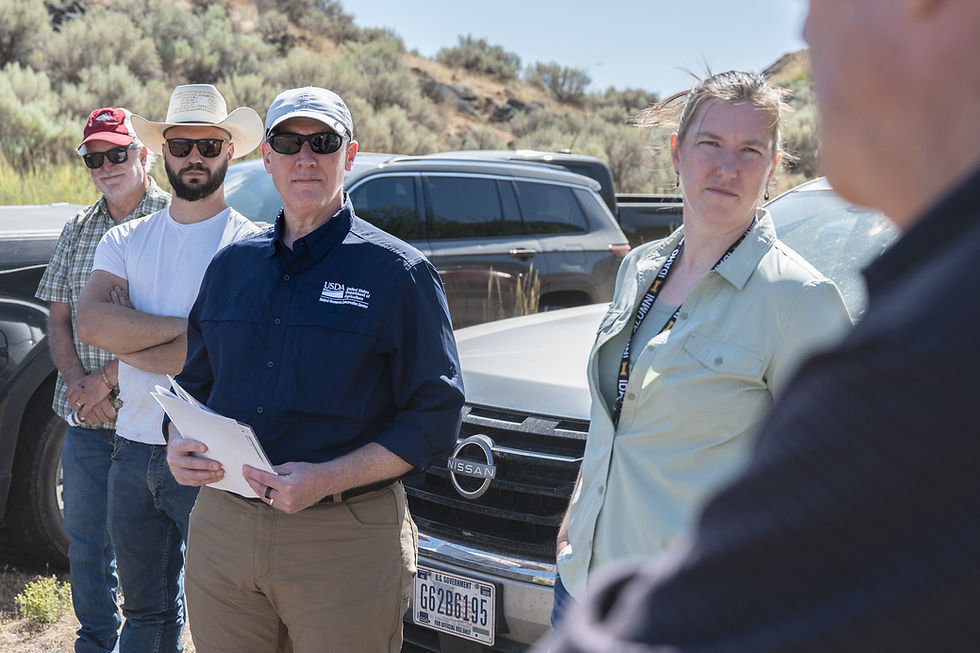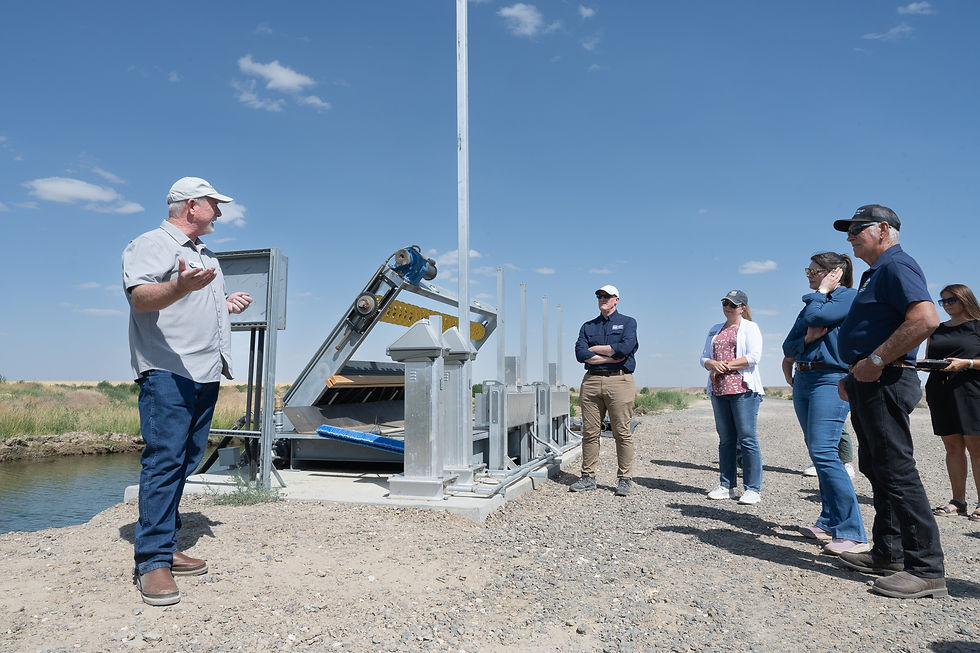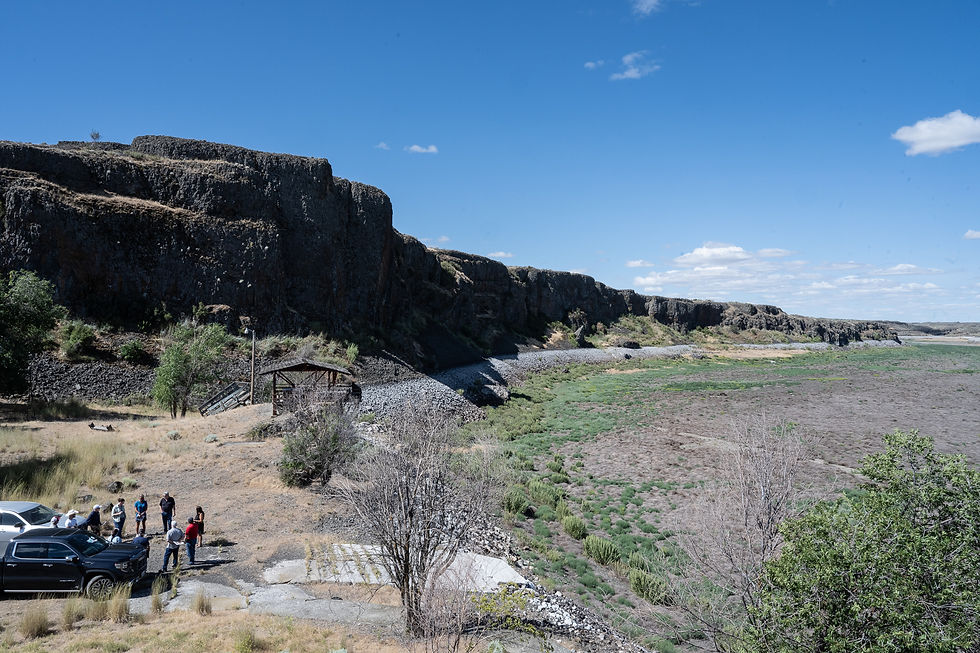NRCS Associate Chief Louis Aspey Visits Eastern Washington to Tour OGWRP Progress
- Columbia Basin Conservation District

- Aug 14
- 3 min read
On July 15, 2025, Associate Chief Louis Aspey of the USDA Natural Resources Conservation Service (NRCS) visited eastern Washington for a firsthand look at the progress of the Odessa Groundwater Replacement Program (OGWRP). Hosted by the Columbia Basin Conservation District (CBCD) and the East Columbia Basin Irrigation District (ECBID), the visit was part of a field tour that highlighted the region’s efforts to build a more sustainable future for agriculture and groundwater resources.

The OGWRP is a collaborative initiative designed to transition farmers from declining groundwater wells to more reliable surface water supplied through the Columbia Basin Project. During the tour, Associate Chief Aspey and other stakeholders viewed key infrastructure, including the recently completed EL 86.4 delivery system, which will provide surface water to thousands of acres of farmland.

Local leaders, irrigators, and conservation professionals had the opportunity to share insights about the challenges and successes of the project, as well as the role that NRCS programs and partnerships have played in making conservation-focused solutions possible.

A key moment of the tour was the stop at Pacific Lake. Once dry from 2004 to 2016, the lake is again completely dry as of 2022 due to the declining Odessa Aquifer. The dry lake sparked meaningful conversations about drought, water availability, and the long-term challenges facing this part of the Columbia Basin. For many participants, it was a powerful visual reminder of the critical need for continued investment in water conservation.
Left photo: Elsa Bowen, Chair of the Columbia Basin Sustainable Water Coalition, and Commissioner Jo Gilchrist, board member, at Pacific Lake in Lincoln County. Their leadership is crucial as the Coalition addresses the ongoing water challenges in the region. Right photo: Pacific Lake in Lincoln County, showing the stark reality of low water levels. Once a thriving recreational spot, the lake is now dry, highlighting the urgent need for conservation efforts.
As eastern Washington continues to face water availability issues, Aspey’s visit affirmed the importance of continued federal, state, and local collaboration. The CBCD and partners expressed appreciation for NRCS’s ongoing support and highlighted future opportunities to expand conservation practices in the Columbia Basin. Learn more about the OGWRP at www.ogwrp-programs.org.











Comments